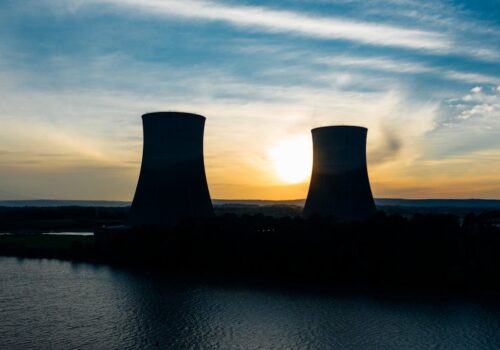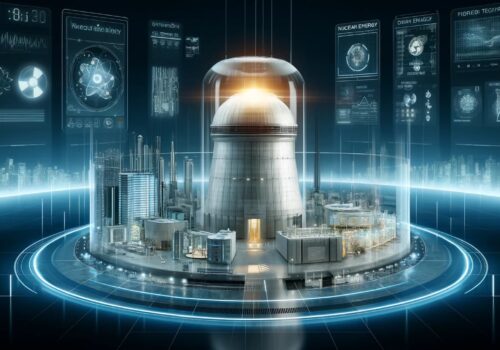How Can Nuclear Wastes Be Properly Managed to Prevent Pollution
Nuclear waste is treated as a high-level waste in many regions of the world. Although generated in small amounts, nuclear waste is harmful to health and the environment. Nuclear waste disposal is an issue that needs to be resolved. Without question, the radioactive waste produced by nuclear power plants is a problem. As seen in several prior occurrences, radioactive waste can seriously harm the environment. Over time, improvements have been made in how radioactive waste is generated. The amount of final nuclear waste produced today is set to decrease soon, thanks to modern technology. Additionally, the most recent reactor generations will function more effectively to minimize the overall waste produced. But before and after these technologies are fully functional, nuclear will still need to be managed. So, how is nuclear waste managed to prevent disaster?
Waste Treatment
Following past incidents that led to catastrophic events, many methods of managing nuclear wastes have been devised. One such is waste treatment. Since the waste generated from nuclear plants can’t be exposed carelessly to the atmosphere, treating the waste has become a common method of disposal. As you may have heard or seen, the impact of radioactive waste on human health is severe. In fact, in some regions, instead of taking loans from companies such as Thorn to finance mortgages, business, or other personal matters, many people are forced to borrow to take care of their health. According to data provided by the loan company called Leasy Minilån, more than 30% of people who live in polluted regions take out loans for health care. The effect of pollution on health is severe, and this is one reason why many laws and regulations have been enacted to reduce and eventually eradicate pollution.
The treatment approach involves the use of decontaminating, drying or shredding methods to manage nuclear waste. At times, the waste is solidified to properly dispose of it. Whatever treatment method is used to change the state of the waste, the remains are put in industrial canisters for many years to decay. The final disposal follows. The decay period can be up to 50 years.

Storage
Storing nuclear waste is common practice. Since waste generated from a nuclear plant is little, this makes it easy to store. Among other energy sources, nuclear power generates the least waste. Hence the small amount of waste generated is easy to store. In many cases, until a suitable final disposal method is devised, a storage medium is used to keep nuclear waste for months or years.
Permanent Disposal
Many technologies are currently underway to develop ways to make nuclear waste vanish completely. However, as of now, the feasible disposal method is permanent storage or deep burial. Permanent disposal involves creating facilities in special locations to permanently hold nuclear waste. Such locations are well built and engineered to avoid potentially dangerous incidents. Personnel are shielded from any sort of harm exposure; however, in the case of unexpected accidents, loans can be taken from reputable banks such as Zmarta bank. Some storage locations are located on-site. On-site storage is often used as a temporary unit till permanent disposal is arranged. Across Europe, permanent storage units are land-based facilities designed to hold nuclear waste for as long as 50 years or more. The science behind this method is unknown to many. According to experts, when nuclear wastes are stored for a long period, the toxicity is reduced by 99%. So this makes storage a highly preferred and recommended storage option.
Reprocessing
Reprocessing of nuclear waste is not common but yet used by some countries. Countries in Europe use this method to manage nuclear waste. Used nuclear fuel is often recycled to function as another type of fuel or byproduct. With development underway, some reactors would start to run on nuclear fuel.
Transportation of Nuclear Waste
The nuclear waste management techniques considered so far are safe. Good enough, the same safety measures are used when transporting nuclear waste to storage units. Nuclear waste is contained in canisters built to withstand accidents on land. The containers are reinforced using materials that can remain intact when submerged, punctured, and whatever the case might be.
Why Nuclear Must Be Managed
To avoid environmental catastrophes, radioactive waste must be carefully controlled and stored. As of now, even though it represents 1% of toxic waste, many measures are in place to ensure proper use and disposal of the waste. The amount of waste generated is expected to drop even further when better technology is implemented to recycle this waste.
In conclusion, as more entities are looking to employ the use of nuclear energy, each is mandated to follow the regulations governing its use. And this includes the use of approved storage and disposal methods. Governmental bodies in charge of nuclear energy are also present in nations using this energy source. The goal is to ensure compliance that will guarantee the safety of others’ concerns.




